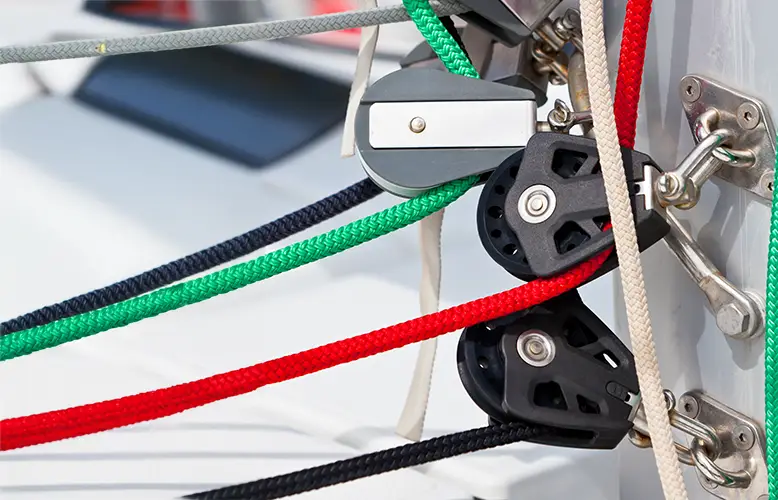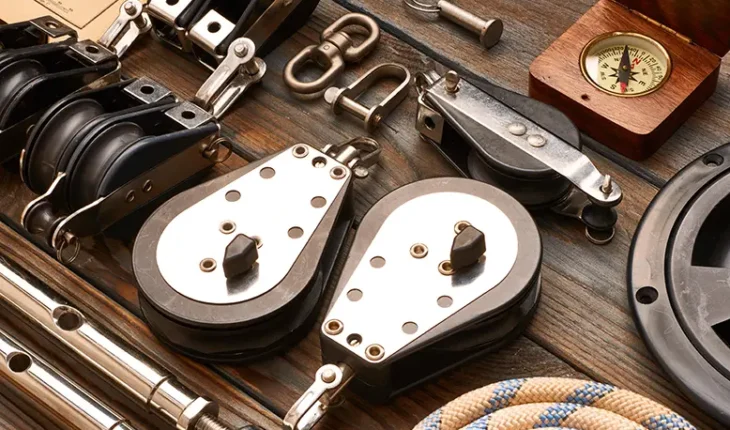
It doesn’t matter if you choose to accept the challenges of sailing in the open seas, or decide to keep it more local, truth is you have to be prepared for the adventure. Besides paying attention to acquiring all the essential equipment items, from appropriate clothing and life jackets to VHF radio and navigation tools, it’s necessary to make sure your sailboat is up to the challenge, down to the smallest detail.
Looking into the condition of the sails and anchor is a must, but so is checking up the blocks and pulleys. Small as they may be, they’re a crucial part of the sailboat’s rigging system, and without proper blocks and pulleys you won’t have the peace of mind you’re truly ready for the journey ahead.
They’re meant for managing various boat aspects, such as halyards, downhauls, mainsheets and spinnakers. So, investing in top-notch sailing blocks and pulleys made from quality materials is a must, and whether you’re replacing old ones or buying new ones from scratch, you ought to know how to choose the right one for the job. This is because only focusing on famous brands like Harken, Allen, Ronstan, Selden, Lewmar and Spinlock won’t help clear up confusion as they offer many quality products. To be able to experience hassle-free shopping, focus on the basics first.
What is the Difference Between a Pulley and a Block?

Though used interchangeably as terms, pulleys are simpler as opposed to the more complex blocks that consist of single or multiple pulleys. The combination of multiple blocks, on the other hand, is used for the creation of a block and tackle system, perfect for the particularly heavy lines and sails. Buying these sailing bits of quality is essential as they’re important in tasks like controlling and redirecting lines, as well as distributing the load and reducing friction, all of which proves they play a significant role in your overall safety.
What Are the Different Types of Sailing Blocks?

When you set out on a shopping quest to choose the best sailing blocks there are, you come across a vast array of options which can be confusing to say the least. To avoid costly errors, or worse, putting your life in danger, it’s advisable to get to know a bit about the different types, which are:
Single Blocks
The single-pulley wheel gives this model of sail blocks their name, making it simpler in construction thus fit for lightweight and simpler tasks like raising sails and adjusting sail foot tension. As such, these blocks also come with the most affordable prices.
Double Blocks
The presence of two sheaves in the housing makes the double block type perfect for mainsheets as well as systems like vang tackles that require use of more mechanical advantage.
Triple Blocks
If you’re looking for even more mechanical advantage, then consider acquiring the three-sheave block design.
Ratchet Blocks
The name of this type of blocks comes from the presence of the ratchet system which is a braking feature added to stop the sheave rotating thus taking up the load instead. By locking the sheave in one direction, it reduces the load on the sailor, especially useful in high-load areas where you need all the reliability you can get to prevent the line from slipping back.
Snatch Blocks

Covered by a clever metal case, the snatch block is a specialty type that’s among the more expensive ones, and it’s known for being heavy-duty and offering incredibly strong and versatile mechanical advantage perfect for lifting and rigging heavy items. One example would be moving lines to different boat areas.
Ball-Bearing Blocks
If you frequently adjust lines, you need to reduce all the friction that you can to make the process smooth and fast, which calls for the help of ball-bearing blocks. As you might guess by the name, they consist of ball bearings, a set of multiple small diameter spherical balls in a cage between the axle and the sheave, and as such they do the rotating. Along with the ratchet, the ball-bearing blocks are mid-range in price as they’re more expensive than basic single-sheave models, and less expensive than the snatch type.
Plain-Bearing Blocks
Unlike the ball-bearing counterpart, the plain-bearing blocks lack the ball bearings, and instead rely on the sheave to rotate on a stainless-steel pin. As such, they’re ideal for static or heavier loads like high-load lines that don’t need to be moved on a frequent basis.

Now that we’ve covered the different types available at the specialised retailers, it’s time to focus on key aspects that can further help you make the most of the shopping without undergoing any hassle.
Your Sailing Needs
Before you move on to selecting from the different options, it’s necessary to consider your specific sailing style to be certain you make the right choice of sailing blocks for your adventures. Are you into day sailing and cruising? If so, you should look into designs that are of high quality, with materials like stainless steel for the components to ensure they’re durable and corrosion-resistant.
Ease of use is another must. Are you perhaps into racing instead? In that case, your focus should be on lightweight blocks like the ball-bearing for smooth and frictionless movement. Boat weight is another crucial aspect here, so be sure to choose designs that are made from more lightweight materials like composite or aluminium to avoid adding more weight.
If, however, you’re into offshore sailing, then this is where you ought to choose robust blocks that have high-load ratings and are made for harsh conditions and long distances with top-notch materials like high-grade aluminium and stainless steel housings.
The Blocks’ Load Capacity
The reason there are various types of blocks available is because not all of them are created equal – some are better at handling more loads than others. That’s why it’s essential to consider the chosen block’s working load limit (WLL) to be sure it’s up to the task. If it’s a task that requires the block to handle more stress, like with mainsails applications, then the WLL should be higher.
The Blocks’ Material

As you may have already noted, the material the block, and the block components specifically, are made from determines whether or not the chosen type is suitable for your sailing style. With this in mind, opting for composite made blocks and pulleys would provide you with the needed lightweight property, along with corrosion-resistance at a fraction of the cost of sturdy metals, for example.
If you need all the reliability you can get, then this calls for the use of stainless steel blocks. They’re heavy-duty and corrosion resistant, perfect for marine environments. Lastly, aluminium is known for its lightweight property along with its strength, so it’s usually the go-to material for high-performance blocks.
The Blocks’ Line Diameter
When you buy the sailing blocks, you intend to use them for quite a while, right; you don’t expect to end up having to buy new ones that soon. Well, to ensure you get exactly this, you also have to consider the block’s line diameter to be certain the one you get comes with a sheave that’s suitable for the diameter of the line you would use it with. Getting the ideal one saves you from block and line damage, both if the block’s diameter is smaller or bigger than needed.
The Blocks’ Size and Weight

Again, the kind of sailing style you prefer has a lot to say in the size and weight of the block you end up with. If speed is your must, especially when doing performance sailing, then getting a very lightweight design is the solution, as opposed to a heavy-duty large block fit for heavy loads and harsh environments.
The Blocks’ Mounting
Depending on whether you require more versatility with the mounting of the blocks, you have the shackles or loops option, in which the blocks are attached by shackles or loops, followed by the fixed blocks that stay in one position as they’re bolted on the deck or mast. And, there’s another type called the swivel blocks made for the blocks to swivel to align with the movement of the line.





